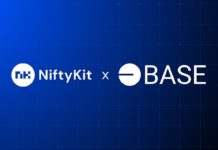With the rise of protocols like Ordinals, Runes, RGB++, Stamp, Atomicals, and PIPE, the Bitcoin network has seen a proliferation of diverse assets, paving the way for innovative applications and commercial scenarios. However, due to underdeveloped and limited asset creation, Bitcoin native assets struggle to achieve efficient and secure interoperability, significantly hindering capital utilization and large-scale commercial adoption.
To address these market challenges, SRC20’s first trading platform, OpenStamp, recently launched LeapX, the first Bitcoin cross-protocol assets leap tool. LeapX enables Bitcoin native assets of all token standards to leap bidirectionally to RGB++ assets, achieving trustless interoperability and seamless movement between L1 and L2, bringing more possibilities to the Bitcoin ecosystem.
Unlocking Bitcoin Native Asset Liquidity with RGB++ Protocol Integration
As market momentum picks up, the scale of the Bitcoin ecosystem assets continue to grow significantly, becoming an integral part of the crypto market. For example, according to GeniiData, as of May 27, there are over 89,000 BRC20 tokens with a market cap of $3.66 billion, covering more than 650,000 on-chain addresses. Atomical Market reports over 110 ARC20 tokens with a market cap of $110 million, while OpenStamp indicates approximately 136 SRC-20 tokens with a market cap exceeding $210 million.
Despite promising growth, Bitcoin native assets still lag behind other crypto sectors. Although protocols like Ordinals have opened up possibilities on the Bitcoin network, the lack of Turing Completeness in their scripting languages restricts these assets to mere trading, unable to unlock more complex application scenario. The incompatible token standards and fragmented ecosystem hinder the development of a cohesive Bitcoin ecosystem.
LeapX addresses these issues by integrating the RGB++ protocol through Bitcoin native asset protocol conversion, enabling a seamless leap across UTXO-based networks. RGB++ is a Bitcoin extension protocol that offers Turing-Complete contract functionality, enhancing transaction efficiency and performance while ensuring security and censorship resistance.
LeapX currently supports BTC assets like SRC20, BRC20, ARC20, and RUNES. Users can convert these assets to RGB++ assets with a single click, gaining advantages such as non-interactive transfers, transaction folding, and interoperability with CKB without cross-chain requirements. These assets can then participate in infrastructure and DeFi applications like DEXs, stablecoins, and lending protocols.
Achieving Trustless Cross-Chain Interoperability via Homomorphic Binding: Supporting Bitcoin L2 and Solana
As interest and transaction volume in the Bitcoin ecosystem grow, building the application layer has become a key narrative, with Layer 2 solutions (L2s) like BTCFi emerging to unlock Bitcoin asset liquidity.
From a technical perspective, the main approaches include sidechains, rollups, state channels, client-side validation, and multi-sig + EVM. Each approach has its own advantages in terms of security, nativity, and decentralization. Most Bitcoin L2s bridge L1 assets using cross-chain bridges, with multisig + Ethereum EVM being a common method. This allows users to deposit Bitcoin assets into a multi-sig address, minting corresponding assets on the EVM chain. However, supporting UTXO-based L1 assets requires cross-chain bridge solutions (such as lock + mint/burn) to bridge L1 assets and achieve performance expansion, facing market legitimacy concerns.
In the crypto “dark forest,” cross-chain bridges carry significant centralization risks. For Bitcoin L2s, achieving sufficient decentralization and ensuring asset security are fundamental to gaining user trust, which is crucial for their survival and the liquidity of the ecosystem.
In contrast, LeapX uses homomorphic binding technology to achieve asset “cross-chain” transfers. This allows users to circulate assets on L2 without the risks associated with cross-chain bridges, enhancing its legitimacy.
The homomorphic binding solution, often referred to as a “modded UTXO,” was introduced by the public blockchain Nervos CKB. According to its founder, Cipher, homomorphic binding leverages the homogeneity of the UTXO model to bind and map UTXO-based Bitcoin L1 protocol assets (including Runes, Atomicals, Taproot Asset, and Stamps) onto Nervos CKB’s Cells. It uses script constraints on both the CKB and Bitcoin chains to verify the correctness of state calculations and the validity of ownership changes. This method brings Turing-complete contract extensions and performance improvements to Bitcoin without requiring cross-chain bridges or compromising security. Compared to other Bitcoin L2 solutions, LeapX’s homomorphic binding technology offers users a safer, more convenient, and richer asset management experience. It allows L1 assets to participate more integrally in various L2 activities, thereby further enhancing the liquidity of Bitcoin assets.
Moreover, the security of Bitcoin’s PoW consensus mechanism is well-known and has stood the test of time. Homomorphic binding also relies on a PoW-based public blockchain, ensuring maximum security and decentralization for Bitcoin L1 assets.
Currently, LeapX supports Bitcoin assets on UTXO-based L2s, such as CKB and OpenStamp’s native Bitcoin L2 project ContinentX, as well as the UTXO Stack chain. Additionally, LeapX facilitates seamless integration of Bitcoin L1 assets with high-performance blockchains like Solana, whose high throughput and thriving ecosystem will provide greater liquidity for Bitcoin assets. Notably, LeapX will offer airdrop rewards for staking and interacting with cross-chain assets.
As Bitcoin integrates more with mainstream markets, the influx of capital and resources will drive the ecosystem’s development, increasing the demand for interoperable L1 assets. Tools like LeapX address this need, enhancing Bitcoin L1 assets as core components of the Bitcoin ecosystem while enabling innovative and efficient use cases. Asset security, decentralization, and transaction efficiency are crucial factors determining the scale and value of the Bitcoin ecosystem.







































